Moment's Notice
Reviews of Recent Media
(continued)
Amina Claudine Myers
Solace of the Mind
Red Hook RH1007
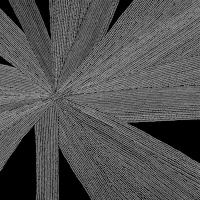 Art Blakey famously remarked that jazz washed away the dust of daily life at a time when there was plenty of strife and suffering, but the current onslaught of horrors, madness, and ravenous cruelty calls for something stronger. Luckily, we have Amina Claudine Myers, whose Solace of the Mind is like a beacon, locating where we are and where we need to go.
Art Blakey famously remarked that jazz washed away the dust of daily life at a time when there was plenty of strife and suffering, but the current onslaught of horrors, madness, and ravenous cruelty calls for something stronger. Luckily, we have Amina Claudine Myers, whose Solace of the Mind is like a beacon, locating where we are and where we need to go.
Throughout this solo program, Myers’ revisits original compositions like “African Blues,” “Song for Mother E,” and “Cairo,” as well as traditional songs like “Steal Away.” She has always employed them to soul-soothing effect, but the blue flame of her earlier recordings is now a ruminative glow. They are feathered into several new pieces, each of which adds a facet to an overall picture of seeking and obtaining solace.
Not much more needs to be said. Amina Claudine Myers is now Mother E. Let her draw you close, sheltered from the buffeting winds of hate and the constant downpours of shit.
–Bill Shoemaker
Aruán Ortiz
Créole Renaissance
Intakt CD441
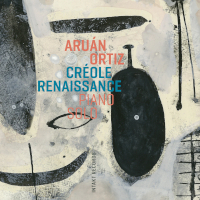 This is the Aruán Ortiz of Cub(an)ism (Intakt, 2017), where he convinces as a tough-minded and idiosyncratic conceptualist who knows how to keep you on the edge of the seat, rather than the free flowing soloist in the James Brandon Lewis Quartet, or even his own trio on Live In Zurich (Intakt, 2017). Once again the focus is on solitary exploration, birthing a music that is austere, unpredictable, and steeped in historical resonance. As detailed in the liners and through the track titles, it is inspired by the flowering of the Négritude, an anti-colonial movement founded by a group of African and Caribbean writers and intellectuals who sought to reclaim the value of blackness and African culture in 1930s Paris.
This is the Aruán Ortiz of Cub(an)ism (Intakt, 2017), where he convinces as a tough-minded and idiosyncratic conceptualist who knows how to keep you on the edge of the seat, rather than the free flowing soloist in the James Brandon Lewis Quartet, or even his own trio on Live In Zurich (Intakt, 2017). Once again the focus is on solitary exploration, birthing a music that is austere, unpredictable, and steeped in historical resonance. As detailed in the liners and through the track titles, it is inspired by the flowering of the Négritude, an anti-colonial movement founded by a group of African and Caribbean writers and intellectuals who sought to reclaim the value of blackness and African culture in 1930s Paris.
Ortiz embeds those ideas in a language where silence, attack, and contrast hold as much weight as melody or rhythm. The opening “L’étudiant noir” establishes the album’s tension in gripping fashion: irregular Morse-code clunks in the bass register meet terse, extreme treble rebuttals, a juxtaposition that serves as a reiterated touchstone, before introducing scuttling, asymmetrical runs from the keys between. Ortiz’s clipped notes and cellular repetitions conjure a distant echo of Cecil Taylor, though he avoids the latter’s torrential density, favoring instead a leaner, more surgical approach.
Further hints of Taylor’s legacy arise in the two “Miniatures” – one forging phrases that blur into hornlike lines, the other descending in prancing intervals – but they are brief sketches rather than homages. His text setting in “From the Distance of My Freedom” makes the program’s political grounding explicit. Ortiz intones words referencing the Black Renaissance, punctuating them with spare figures and melodic shards that expand into broader textures after the recitation subsides.
The ten cuts could easily pass as improvisations in their elusive structures and resistance to overt meter. Afro-Cuban roots surface only in spectral form, deconstructed to the point of near-erasure, as the pianist draws more heavily from 20th Century European and American avant-garde traditions. His nod towards Ellington on “Seven Aprils in Paris (and A Sophisticated Lady)” is sparse and ruminatory, pitting a glacial left hand against some shimmering flourishes in the right. Even though he varies his language, a similar contrast animates “We Belong To Those Who Say No To Darkness” which toggles between dampened strikes and plucked strings yielding oddly metallic overtones, and also “The Haberdasher,” in which flowing cascades spar with a halting bottom end.
The final “Lo que yo quiero es Chan Chan” anchors the recital in Cuban lineage, reshaping a fragment of Francisco Repilado’s (aka Compay Segundo) infectious “Chan Chan” into a recurring motif that morphs through multiple guises. Yet even here, Ortiz resists celebration, folding familiar material into a framework of contemplation. Créole Renaissance confirms him as a pianist not seeking to dazzle with virtuosity, but one probing the intersection of history, identity, and sound with unflinching clarity.
–John Sharpe
Ned Rothenberg
Looms & Legends
Pyroclastic 41
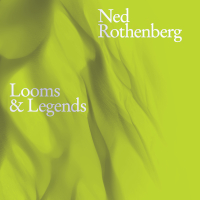 What a treat it is to have a new solo record from winds ace Ned Rothenberg, his first since 2012’s World of Odd Harmonics. Perhaps that record’s title is some kind of indicator as to the wonders that await those who dive into his solo pieces. Looms & Legends is filled with gorgeous, at times astonishing music that reminds you of how bloody hard it is to say something meaningful while playing solo.
What a treat it is to have a new solo record from winds ace Ned Rothenberg, his first since 2012’s World of Odd Harmonics. Perhaps that record’s title is some kind of indicator as to the wonders that await those who dive into his solo pieces. Looms & Legends is filled with gorgeous, at times astonishing music that reminds you of how bloody hard it is to say something meaningful while playing solo.
The beautiful, minimalist loop piece “Dance Above” on clarinet opens up. It’s a delight to listen to Rothenberg sustain those overtones while the pattern alone is tough as hell. His music, however, is not about technical wizardry but about how best to sustain and advance ideas that are frankly quite arresting and emotional. “Denali,” for example, is a gorgeously spacious alto piece, searching but patient until it locks into a wonderfully dynamic groove. Pieces like and the even more intense “Urgency” are just masterful in their range and dynamism. Sometimes Rothenberg really goes for the heart, as on the stirring alto piece “Resistance Anthem” or “Brief Tall Tale,” which remind me a bit of Rzewski pieces. The beautiful rising lines of “Tender Hooks” also make for some exhilarating music. “How You Slice It” is a craggy piece that sounds like woodblocks assembled and taken apart in the air, along with some nifty overtone spirals. “Fra Gile” extends some of these ideas, almost to the point where it sounds like a signal is cutting out. And “Bounding Not Binding” cuts across your ears with what could almost be amplifier feedback.
The whole set is filled with wonder and invention, played with tremendous heart and focus right up to the closing shakuhachi reading of “’Round Midnight.” It’s been a long time since I’ve heard a solo record this compelling.
–Jason Bivins
Shifa شفاء
Ecliptic
Discus Music 194CD
Pat Thomas + Dominic Lash + Tony Orrell
Lifeline
Discus Music 198CD
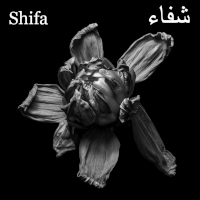
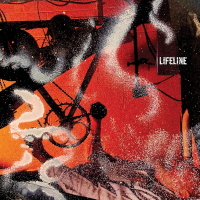 Keyboard player Pat Thomas continues to astound with his deeply insightful writing about the impact of African Muslim and Arabic music on the history of jazz and a plethora of projects that transfigure tradition. There are his solos like investigations of Ellington and Monk, freely improvised prepared piano extrapolations, lushly orchestrated electronics, or abstracted Jungle/dub step. There’s his working ensembles like [Ahmed] along with Joel Grip, Antonin Gerbal, and Seymour Wright which interpolates the music of Ahmed Abdul-Malik into a single-minded approach to collective deconstruction, Bleyschool with Dominic Lash and Tony Orrell that plumbs the music of Paul Bley, Ellington, Monk, and the trio Shifa شفاء with Rachel Musson and Mark Sanders that mines the tradition of free reed/piano/drums free jazz. And then there are his countless, ongoing collaborations he’s been part of over the last three-plus decades. For an in-depth examination of Thomas’s work, read Bill Shoemaker’s “Page One” column in PoD 69. These two recent releases on the Discus label deliver a new live recording by Shifa شفاء and Lifeline, a reinvention of Bleyschool as an electronic ensemble.
Keyboard player Pat Thomas continues to astound with his deeply insightful writing about the impact of African Muslim and Arabic music on the history of jazz and a plethora of projects that transfigure tradition. There are his solos like investigations of Ellington and Monk, freely improvised prepared piano extrapolations, lushly orchestrated electronics, or abstracted Jungle/dub step. There’s his working ensembles like [Ahmed] along with Joel Grip, Antonin Gerbal, and Seymour Wright which interpolates the music of Ahmed Abdul-Malik into a single-minded approach to collective deconstruction, Bleyschool with Dominic Lash and Tony Orrell that plumbs the music of Paul Bley, Ellington, Monk, and the trio Shifa شفاء with Rachel Musson and Mark Sanders that mines the tradition of free reed/piano/drums free jazz. And then there are his countless, ongoing collaborations he’s been part of over the last three-plus decades. For an in-depth examination of Thomas’s work, read Bill Shoemaker’s “Page One” column in PoD 69. These two recent releases on the Discus label deliver a new live recording by Shifa شفاء and Lifeline, a reinvention of Bleyschool as an electronic ensemble.
Ecliptic is the third release by Shifa شفاء, a name taken from the Arabic word for healing. Recorded live at Café Oto in London in February 2023, the 46-minute improvisation is a masterful study in spontaneous communication. Ecliptic is defined as “the great circle of the celestial sphere that is the apparent path of the sun among the stars or of the earth as seen from the sun” and that cyclical path is an apt analogy for this set. Starting out with the rustle of inside-piano playing and spattered percussion, Musson enters in with a stabbing motif. Sanders builds tumbling momentum and Thomas introduces hammered, splayed notes from the top of the keyboard and the piece slowly builds from there. The three lock in on sections of trouncing vigor countered by pools of calm with short solo statements by each of the players.
That strategy of elasticity of density and trajectory informs the ensuing improvisation. The trio takes their time building to crescendos of forceful tenor, shattering piano shards, and roiling percussion which they freely release into introspective interaction. Musson’s tenor playing is inspired throughout, drawing on the entire range of her horn, from squalling forceful torrents to probing, labyrinthine, dusky lyricism. Thomas’ acoustic piano playing is dazzling, from thunderous slabs, detailed cascades, pinpoint attack of notes and clusters to timbrally rich inside-piano preparations and plucked strings. Sanders’ sweeping percussive palette moves from shimmering layers of cymbals and abraded surfaces to pinpoint resonating punctuation to fiery, thunderous undercurrents of open pulse. The trio seamlessly navigates their way through all-in collective playing to various duos and solos, from explosive energy to pensive reflection, never once losing their singular focus. This one is another impressive addition to their discography.
Looking at the lineup of Pat Thomas, Dominic Lash, and Tony Orrell one might assume that Lifeline is an expansion of their piano/bass/drums trio Bleyschool. But take a closer look at the instrumentation with Thomas on keyboard and electronics, Lash on electric guitar, and Orrell on electric drums and cymbals and it is quickly apparent that something entirely different is going on here. From the first angular, shredded blasts, Lifeline carves out a strategy that caterwauls along with fervent intensity. While the sonic spectrum they draw from is brash and noisy, their interaction is sharp and detailed throughout. The six improvisations range from three to eleven minutes long, each carving out specific strategies toward group improvisation, building potent layers that are refracted with vigorous conviction and stalwart ingenuity.
Thomas has deep experience using electronics (check out releases like KANZA AL QALB or This Is Trickstep) and the textures, densities, and fractured-beats he fires off meld strapping heft with a keen sense of collaborative synergy. Lash has proven himself as a distinctive guitarist in groups like Trim or his duos with Thomas or Ståle Liavik Solberg. Here, his ringing tones, frayed clusters, or surging, fractured, overdriven lines provide an effective foil for Thomas’ electronics. Orrell’s use of electric drums provides the ideal complement to the group’s palette, providing spiky punctuation and jagged counterpoint to the improvisational arcs. Rarely does one encounter a trio that can balance two projects as diametrically diverse as Bleyschool and Lifeline. One looks forward to hearing where they will continue to push their partnership.
–Michael Rosenstein
Larry Stabbins + Keith Tippett + Louis Moholo-Moholo
Live in Foggia
Ogun OGCD 051
Larry Stabbins + Mark Sanders
Cup & Ring
Discus Music 191CD
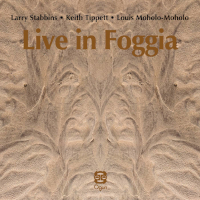
 British reed player Larry Stabbins has a career stretching back over 50 years performing in seminal improv groups including ensembles led by Keith Tippett, Mike Westbrook, and many others. He was also a regular at the London Little Theatre Club in innumerable free improv settings while working as a freelance musician in a variety of studio sessions, dance bands, and soul groups. Since those formative years, he has been a member of groups ranging from free improvisation to funk to pop music. In 2013, Stabbins took a decade-long hiatus from playing, returning in full force in 2022. These two recent releases present an archival live recording from 1985 with a working trio alongside Tippett and Louis Moholo-Moholo as well as a recent duo collaboration with drummer Mark Sanders.
British reed player Larry Stabbins has a career stretching back over 50 years performing in seminal improv groups including ensembles led by Keith Tippett, Mike Westbrook, and many others. He was also a regular at the London Little Theatre Club in innumerable free improv settings while working as a freelance musician in a variety of studio sessions, dance bands, and soul groups. Since those formative years, he has been a member of groups ranging from free improvisation to funk to pop music. In 2013, Stabbins took a decade-long hiatus from playing, returning in full force in 2022. These two recent releases present an archival live recording from 1985 with a working trio alongside Tippett and Louis Moholo-Moholo as well as a recent duo collaboration with drummer Mark Sanders.
In the mid-1980s, Stabbins and Tippett played together as a duo as well as a trio with Moholo-Moholo. The group melded their collective backgrounds, from scorching free interplay to quiet, open lyricism to kwela groove. What is particularly striking about the trio is the way they could hold tension as they lithely moved between free lyricism and explosive exuberance. They recorded the FMP release Tern at the 1982 Berlin Total Music Meeting. Live in Foggia, recorded three years later, reprises two pieces from the earlier session in much-extended readings.
The 45-minute “The Greatest Service” begins with the quiet shimmer of cymbals, a hushed melodic thread on piano, and Stabbins’ keeningly lyrical tenor. The three settle in, cycling through the theme and patiently building intensity. A third of the way in, Stabbins explodes with skirling potency, countered by Tippett’s cascading, stabbing flurries, opening to a solemn, three-way vocalization accompanied by a tranquil flute melody. Building from this calm, the improvisation ebbs and flows with sterling, attentive communication. In the final third, the improvisation builds from a loose groove, with Tippett’s inside-piano torrents, Stabbins’ circuitous soprano playing, and Moholo-Moholo’s sizzling pulse as the three collectively join in for a joyous kwela stomp which resolves into a simmering lyricism. The 27-minute “Shield” follows, starting with soprano and piano ostinatos fluttering over a repeated drum pattern. Cycling soprano lines and churning drums spur the piece into a scorching middle section. During the final third, they introduce a theme that hints at “Goodbye Porkpie Hat,” then takes off to an angular, stop-and-start conclusion.
One of Stabbins’ earliest recordings was a 1976 duo with percussionist Roy Ashbury. Cup & Ring, a duo with drummer Mark Sanders, recorded in September 2024 revisits that context with a series of 11 compact duets. For this session, Stabbins plays alto saxophone, concert and alto flutes, and bass clarinet, with each improvisation focusing on a different instrument to carve out a specific sound space. The two lock in on each piece, homing in on a singular pace and trajectory and assiduously exploring it. The five “Cup” pieces are flute explorations buoyed by Sanders’ percussion, ranging from unhurried, doleful melodicism to fluttering spare solemnity. Stabbins’ full-toned playing is effectively matched with Sanders’ spare approach favoring toms and the metallic splash of cymbals. The three alto sax “Ring” pieces range from measured, open lyricism to stabbing, searing vigor, bringing out a more active attack from the drummer. The three bass clarinet “Ring” pieces serve as a foil to those on alto sax and flute, with Stabbins mostly sticking to the lower registers of the horn. These are the most conversational with a casual back-and-forth though they tend to meander a bit. One welcomes Stabbins’ return to playing and one looks forward to seeing where he will continue to take things.
–Michael Rosenstein